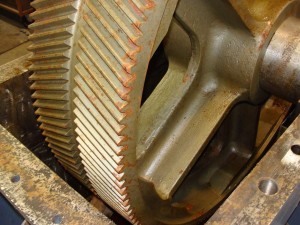Carefully choosing couplings can be the difference between success and failure of operations. The wrong coupling could cause catastrophic failure—or it could suck away efficiency and slowly damage machinery. Engineers must take time to carefully choose the best coupling for the application at hand; otherwise industrial plants face costly maintenance and/or replacement.
Shaft size is probably the most obvious consideration—after all, a coupling that’s not properly sized can’t drive anything. Quality is another given element, as only high-quality couplings can offer a long service life with consistent measurement accuracy. And even freshmen engineering students would likely appreciate the importance of accounting for misalignment, including parallel offset, angular misalignment, and axial compression and extension. Let’s take a look at a few additional considerations that should factor into a coupling selection process.
Falk Gear Couplings: Key Coupling Specs
Torsional Rigidity. The coupling must be able to tolerate shaft displacement without losing grip. Different applications require different amounts of axial stiffness. Falk’s gear and disc couplings are torsionally rigid, while grid and elastomer couplings are torsionally soft.
Backlash. When there is some play in couplings, backlash occurs. Backlash is lost motion that occurs due to gaps between parts. Precise applications demand zero backlash. Freedom disc couplings are one of Falk’s many backlash-free coupling options.
Torque. The ability to transfer rotational force between shafts is termed torque. Think of it as twisting power. It is a crucial aspect of any industrial operation, as torque permits the driving power from the motor to be passed to a shaft. When choosing a coupling, determine the maximum possible torque by multiplying the gear speed reduction ration and the starting motor torque. Or, in setups with a brake stop or clutch start, simply measure the maximum instantaneous torque value.
Mounting Arrangement. Is there enough space for the coupling? Will it require specialized mounting? Such logistical questions must be considered when choosing couplings. Additional considerations include orientation; for instance, vertical alignment requires the coupling to support additional vertical weight. Finally, in situations with a gap between the shaft and the drive, a special coupling spacer may be needed to bridge the gap.
Environmental Factors. Within this category are many operational factors like ambient temperature; starts and stops versus consistent operation; and corrosion resistance. Food-grade production lines, offshore corrosive environments, and petrochemical operations require corrosion resistance. Other industrial operations may create ambient explosive gases, in which case it’s key to obtain an explosion-proof coupling (as certified by ATEX). A final environmental consideration is what should happen after a catastrophic failure—would it be better for the line to immediately halt, or should it continue moving? Unique couplings fulfill each of these environmental requirements.
RPM, inertia, and other factors should also be considered when choosing a coupling. Are you overwhelmed yet? Have no fear—we can help you select the best coupling for your application from the thousands of couplings in our online inventory. Call us today for friendly, expert assistance in coupling selection.
Posted under Machinery Maintenance on Friday, May 29th, 2015

